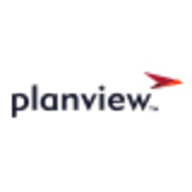

Find out in this report how the two Project Portfolio Management solutions compare in terms of features, pricing, service and support, easy of deployment, and ROI.


| Company Size | Count |
|---|---|
| Small Business | 38 |
| Midsize Enterprise | 7 |
| Large Enterprise | 6 |
| Company Size | Count |
|---|---|
| Small Business | 3 |
| Midsize Enterprise | 2 |
| Large Enterprise | 58 |
Asana is web-based software-as-a-service that helps teams coordinate and manage their work. It helps companies move faster by making sure everyone knows the team’s plan and process and who is doing what by when.
Each user can create projects using a list, board, calendar, or timeline view. Within each project, users can add tasks, subtasks, sections, comments, attachments, start and due dates, and custom fields. Project and task followers get notifications on changes or comments on the project and/or task in their Inbox. Individual users can see all of the tasks they're responsible for across all of their projects in a view called My Tasks.
Asana is available in English, French, Spanish, German, and Portuguese.
Planview Portfolios offers a comprehensive platform for managing IT, project and resource management, along with strategic planning. The tool focuses on optimizing resource allocation and financial analysis, supporting global operations.
Organizations use Planview Portfolios to streamline project tracking from inception to completion, enhancing strategic alignment with corporate objectives. The tool integrates with platforms like JIRA to provide seamless workflows and supports critical business processes, including budgeting and capacity planning. Teams benefit from customized configurations and robust reporting, further supporting effective decision-making. Despite its strengths, improvements are sought in navigation, documentation, and integration capabilities.
What are the key features?In industries like IT and project management, Planview Portfolios supports complex portfolio handling, ensuring visibility across global operations. Companies in these sectors leverage its strategic planning tools for strategic alignment and resource management, integrating with existing systems for improved process efficiency.
We monitor all Project Portfolio Management reviews to prevent fraudulent reviews and keep review quality high. We do not post reviews by company employees or direct competitors. We validate each review for authenticity via cross-reference with LinkedIn, and personal follow-up with the reviewer when necessary.